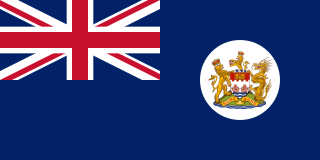 W
WBritish Hong Kong was a colony and dependent territory of the British Empire from 1841 to 1997, apart from a brief period under Japanese occupation from 1941 to 1945. The colonial period began with the occupation of Hong Kong Island in 1841 during the First Opium War. The island was ceded to Great Britain by the Treaty of Nanking, ratified by the Daoguang Emperor in the aftermath of the war of 1842. It was established as a Crown colony in 1843. The colony expanded to the Kowloon Peninsula in 1860 after the Second Opium War and was further extended in 1898 when the British obtained a 99-year lease of the New Territories.
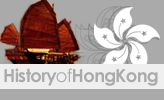 W
WHong Kong (1800s–1930s) oversaw the founding of the new crown colony of Hong Kong under the British Empire. After the First Opium War, the territory was ceded by the Qing Empire to the United Kingdom of Great Britain and Ireland through Treaty of Nanjing (1842) and Convention of Peking (1860) in perpetuity, with additional land was leased to the British under the Convention for the Extension of Hong Kong Territory (1898), Hong Kong became one of the first parts of East Asia to undergo industrialisation.
 W
WThe Hong Kong 1956 protests, also known as Double Ten riots, were the result of escalating provocations between the pro-ROC camp and local communists in Hong Kong during Double Ten Day, 10 October 1956.
 W
WThe 1967 Hong Kong riots were large-scale riots by Chinese Communist Party (CCP) sympathisers against the British Hong Kong government, in the backdrop of the Cultural Revolution in the People's Republic of China (PRC).
 W
WThe 1894 Hong Kong plague, part of the third plague pandemic, was a major outbreak of the bubonic plague in Hong Kong. While the plague was harshest in 1894, it returned annually between 1895 and 1929, and killed over 20,000 in total, with a fatality rate of more than 93%. The plague was a major turning point in the history of colonial Hong Kong, as it forced the colonial government to reexamine its policy towards the Chinese community, and invest in the wellbeing of the Chinese.
 W
WThe 1950s in Hong Kong began against the chaotic backdrop of the resumption of British sovereignty after the Japanese occupation of Hong Kong ended in 1945, and the renewal of the Nationalist-Communist Civil War in mainland China. It prompted a large influx of refugees from the mainland, causing a huge population surge: from 1945 to 1951, the population grew from 600,000 to 2.1 million. The government struggled to accommodate these immigrants. Unrest in China also prompted businesses to relocate their assets and capital from Shanghai to Hong Kong. Together with the cheap labour of the immigrants, the seeds of Hong Kong's economic miracle in the second half of the 20th century were sown.
 W
W1960s in Hong Kong continued with the development and expansion of manufacturing that began in the previous decade. The economic progress made in the period would categorise Hong Kong as one of Four Asian Tigers along with Singapore, South Korea, and Taiwan.
 W
WHong Kong in the 1970s underwent many changes that shaped its future, led for most of the decade by its longest-serving and reform-minded Governor, Murray MacLehose. Economically, it reinvented itself from a manufacturing base into a financial centre.
 W
W1980s in Hong Kong marks a period when the territory was known for its wealth and trademark lifestyle. Hong Kong would be recognised internationally for its politics, entertainment and skyrocketing real estate prices.
 W
WThe 1990s in Hong Kong marked a transitional period and the last decade of colonial rule in Hong Kong.
 W
WAugustine Heard & Co. was a major nineteenth-century American trading firm in Qing dynasty China whose operations consisted in importing and exporting a large array of goods, including tea and opium.
 W
WThe Boundaries of Hong Kong, officially the Boundary of the Administrative Division of the Hong Kong Special Administrative Region of the People’s Republic of China, is a regulated administrative border with border control in force under the One country, two systems constitutional principle, which separates the Hong Kong Special Administrative Region from mainland China, by land border fence of 30 kilometers and maritime boundary of 733 kilometers, enforcing a separate immigration and customs-controlled jurisdiction from mainland China.
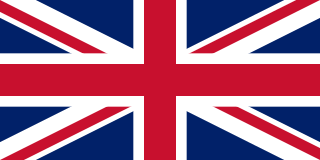 W
WBritish National (Overseas), abbreviated BN(O), is a class of British nationality associated with the former colony of Hong Kong. The status was granted by voluntary registration to individuals with a connection to the territory who had been British Dependent Territories citizens (BDTCs) before the handover to China in 1997. Registration for BN(O) status was limited to the 10-year period preceding the transfer as a transitional arrangement for colonial subjects; current residents cannot newly acquire this nationality.
 W
WThe British Nationality Selection Scheme, usually known in Hong Kong as simply the British Nationality Selection Scheme (BNSS), was a process whereby the Governor of Hong Kong invited certain classes of people, who were permanent residents of Hong Kong with the right of abode, and who were also considered British nationals under the British Nationality Act 1981, but were not British citizens, to apply to be considered and then be selected to become registered as British citizens under the British Nationality Act 1990.
 W
WThe Canton–Hong Kong strike was a strike and boycott that took place in British Hong Kong and Canton, Republic of China, from June 1925 to October 1926. It started out as a response to the May 30 Movement shooting incidents in which Chinese protesters were fired upon by Sikh detachments of the Shanghai Municipal Police in Shanghai.
 W
WThe Cenotaph is a war memorial constructed in 1923 and located between Statue Square and the City Hall in Central, Hong Kong, that commemorates the dead in the two world wars who served in Hong Kong in the Royal Navy, British Army and Royal Air Force. Built in stone, it is an almost exact replica of the Cenotaph on Whitehall in London, UK. It is listed as a monument under the Antiquities and Monuments Ordinance.
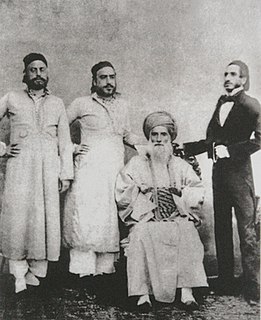 W
WDavid Sassoon & Co., Ltd. was a trading company operating in the 19th century and early 20th century predominantly in India, China and Japan.
 W
WDent & Co. or Dent's, was one of the wealthiest British merchant firms, or Hongs, active in China during the 19th century. A direct rival to Jardine, Matheson & Co, together with Russell & Co., these three companies are recognised as the original Canton Hongs active in early Colonial Hong Kong.
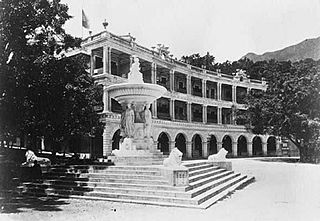 W
WDent's Fountain, also known as the City Hall Fountain, was a fountain in front of the first generation of Hong Kong City Hall on Queen's Road Central in Victoria, Hong Kong. It was donated to the people of Hong Kong by merchant John Dent of Dent & Co. in 1864 but was not installed until the completion of the City Hall in 1869. It was demolished in 1933 due to construction of the third generation Hongkong and Shanghai Banking Corporation Building.
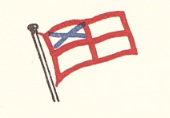 W
WDodwell & Co. or Dodwell's, was one of the leading British merchant firms, or hongs, active in China and Japan during the 19th and 20th century. It was a direct rival to Jardine, Matheson & Co.
 W
WDouglas Lane is a lane converted for pedestrian use in the core of Hong Kong's Central District. It runs north-south from Des Voeux Road Central to Queen's Road Central. though the street name is continued in Douglas Street which continues to its north across Des Voeux Road Central all the way to Connaught Road Central. The lane is named for Hong Kong Tai-pan Douglas Lapraik.
 W
WThe Douglas Steamship Company was a British merchant shipping and maritime trading company founded in 1883 in the Crown colony of Hong Kong by John Steward Lapraik and dissolved in 1987.
 W
WDouglas Street is a pedestrianised street in Central, Hong Kong. It runs north-south from Connaught Road Central to Des Voeux Road Central, and ends at its intersection with Des Voeux Road Central, though the street name is continued in Douglas Lane which continues almost all the way to Queen's Road Central before curving and converging with Li Yuen Street East.
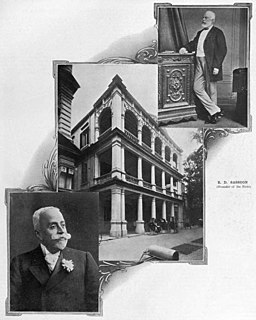 W
WE.D. Sassoon & Co., Ltd. was a trading company operating in the second half of the 19th century and the first half of the 20th century predominantly in India, China and Japan.
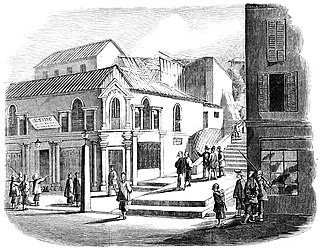 W
WThe Esing Bakery incident, also known as the Ah Lum affair, was a food contamination scandal in the early history of British Hong Kong. On 15 January 1857, during the Second Opium War, several hundred European residents were poisoned non-lethally by arsenic, found in bread produced by a Chinese-owned store, the Esing Bakery. The proprietor of the bakery, Cheong Ah-lum, was accused of plotting the poisoning but was acquitted in a trial by jury. Nonetheless, Cheong was successfully sued for damages and was banished from the colony. The true responsibility for the incident and its intention—whether it was an individual act of terrorism, commercial sabotage, a war crime orchestrated by the Qing government, or purely accidental—both remain a matter of debate.
 W
WThe Flag of Hong Kong between 1959 and 1997 was a Blue Ensign with the coat of arms of Hong Kong on a white disk. In Hong Kong, it is also nicknamed the Hong Kong flag (香港旗), British Hong Kong flag (英屬香港旗) or the Dragon and Lion flag (龍獅旗). In 1959, following a grant from the College of Arms and with the consent of Queen Elizabeth II, it was adopted as the flag of British Hong Kong. While the flag lost its official status following the 1 July 1997 transfer of sovereignty over Hong Kong, it resurfaced in the 2010s as a symbol of Hong Kong independence and protest against Chinese rule in Hong Kong.
 W
WThe Frontier Closed Area, established by the Frontier Closed Area Order, 1951, and 1984 is a regulated border zone in Hong Kong that extended inwards from the border with Mainland China.
 W
WGibb, Livingston & Co., known in Chinese as Jinkee or Renji, was one of the most important and best-known foreign trading firms in China in the late 19th and the first half of the 20th century.
 W
WThe Governor of Hong Kong was the representative of the British Crown in Hong Kong from 1843 to 1997. In this capacity, the governor was president of the Executive Council and Commander-in-Chief of the British Forces Overseas Hong Kong. The governor's roles were defined in the Hong Kong Letters Patent and Royal Instructions. Upon the end of British rule and the handover of Hong Kong to China in 1997, most of the civil functions of this office went to the Chief Executive of Hong Kong, and military functions went to the Commander of the People's Liberation Army Hong Kong Garrison.
 W
WThe handover ceremony of Hong Kong in 1997 officially marked the transfer of sovereignty over Hong Kong from the United Kingdom of Great Britain and Northern Ireland to the People's Republic of China. It was an internationally televised event with the ceremony commencing on the night of 30 June 1997 and finishing on the morning of 1 July 1997. The ceremony was held at the new wing of the Hong Kong Convention and Exhibition Centre (HKCEC) in Wan Chai.
 W
WThe Hong Kong handover, domestically known as the transfer of sovereignty over Hong Kong, was the formal passing of authority over the territory of the colony of Hong Kong from the United Kingdom to the People's Republic of China at midnight on 1 July 1997. This event ended 156 years of British rule in the former colony. Hong Kong was reestablished as a special administrative region of China, and largely continues to maintain its existing economic and, until recently, governing systems distinct from those of mainland China.
 W
WBritish Hong Kong was a colony and dependent territory of the British Empire from 1841 to 1997, apart from a brief period under Japanese occupation from 1941 to 1945. The colonial period began with the occupation of Hong Kong Island in 1841 during the First Opium War. The island was ceded to Great Britain by the Treaty of Nanking, ratified by the Daoguang Emperor in the aftermath of the war of 1842. It was established as a Crown colony in 1843. The colony expanded to the Kowloon Peninsula in 1860 after the Second Opium War and was further extended in 1898 when the British obtained a 99-year lease of the New Territories.
 W
WThe Hong Kong Act 1985 was an Act of the Parliament of the United Kingdom that made provision for the ratification of the Sino-British Joint Declaration that was signed on 19 December 1984 in Beijing that agreed to end British sovereignty and jurisdiction over the then British dependent territory of Hong Kong to the People's Republic of China after 1 July 1997. It was given royal assent on 4 April 1985.
 W
WThe Hong Kong Certificate of Identity (CI) was a formal travel document and passport, issued by the Hong Kong Government's Immigration Department until 30 June 1997. It is no longer possible to possess a valid CI as a travel document, as all CIs have expired by 30 June 2007, though most CI holders should be eligible to hold the HKSAR Passport.
 W
WHong Kong Foundation Day, also known as Hong Kong Day (香港日) and Festival of Hong Kong (香港節), is the anniversary of the founding of Hong Kong as a free port when Britain formally colonised it on 26 January 1841 after entering into a tentative agreement, known as the Chuenpi Convention, with the Qing government’s representative. The former Colonial Government did not make it an official public holiday, nor does the current SAR Government. Yet, some members of the public do organise various history talks or exhibitions on or near 26 January each year.
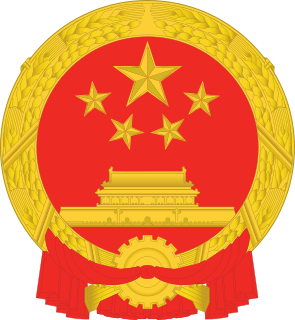 W
WThe Hong Kong National Security Law, officially the Law of the People's Republic of China on Safeguarding National Security in the Hong Kong Special Administrative Region (HKSAR), is a piece of national security legislation concerning Hong Kong. It was passed on 30 June 2020 by the mainland Standing Committee of the National People's Congress in the wake of intense pro-democracy protests instigated by a bill proposed in 2019 to enable extradition to the mainland, and came into force the same day.
 W
WThe Hongkong Canton & Macao Steamboat Company was a British merchant shipping and maritime trading company founded in 1865 in the Crown colony of Hong Kong.
 W
WJardine Matheson Holdings Limited is a Hong Kong-based Bermuda-domiciled British multinational conglomerate. It has a primary listing on the London Stock Exchange and secondary listings on the Singapore Exchange and Bermuda Stock Exchange. The majority of its business interests are in Asia, and its subsidiaries include Jardine Pacific, Jardine Motors, Hongkong Land, Jardine Strategic Holdings, Dairy Farm, Mandarin Oriental Hotel Group, Jardine Cycle & Carriage and Astra International. It set up the Jardine Scholarship in 1982 and Mindset, a mental health-focused charity, in 2002.
 W
WBritish nationality law as it pertains to Hong Kong has been unusual ever since Hong Kong became a British colony in 1842. From its beginning as a sparsely populated trading port to today's cosmopolitan international financial centre and world city of over seven million people, the territory has attracted refugees, immigrants and expatriates alike searching for a new life.
 W
WSir John Fearns Nicoll, was a British colonial governor. He was Colonial Secretary of Hong Kong from 1949 to 1952, and Governor of Singapore from 1952 to 1955.
 W
WPedder Street is a major thoroughfare in the core of Hong Kong's Central District. It runs south–north from Queen's Road Central, continues through Des Voeux Road Central, and ends at its intersection with Connaught Road Central.
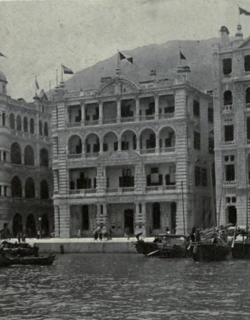 W
WShewan, Tomes & Co. was one of the leading trading companies in Hong Kong and China during the late 19th and early 20th century.
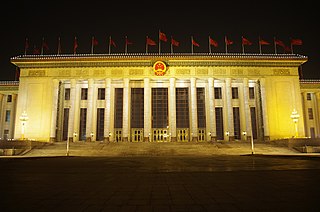 W
WThe Sino-British Joint Declaration is a treaty between the governments of the United Kingdom and China signed in 1984 setting the conditions in which Hong Kong was transferred to Chinese control and for the governance of the territory after 1 July 1997.
 W
WSino-British Joint Liaison Group or simply Joint Liaison Group was a meeting group formed in 1985 between the Governments of the United Kingdom of Great Britain and Northern Ireland and the People's Republic of China after signing of Sino–British Joint Declaration, a treaty for the transfer of sovereignty of Hong Kong from Britain to China. It was set up for liaison, consultation and the exchange of information to implement the Joint Declaration and make the transfer of Hong Kong Government in 1997 smooth.
 W
WThe Six-Day War of 1899 was fought between the British Empire and the major punti clans of the New Territories in Hong Kong on 14–19 April 1899. The British quickly and decisively ended armed resistance from the punti clans, but to prevent future resistance made concessions to placate the indigenous inhabitants. Despite losing to the better equipped British military, they achieved their ultimate goal which was to preserve their land rights, land use, and traditional customs. The special status and rights of the minority indigenous people of Hong Kong are extant to this day. The battle resulted in two wounded on the British side and about 500 dead on the Chinese side.
 W
WAs a former British colony and territory, technical standards in Hong Kong of today has been largely influenced by that of the United Kingdom, with some exceptions due to local and practical considerations.